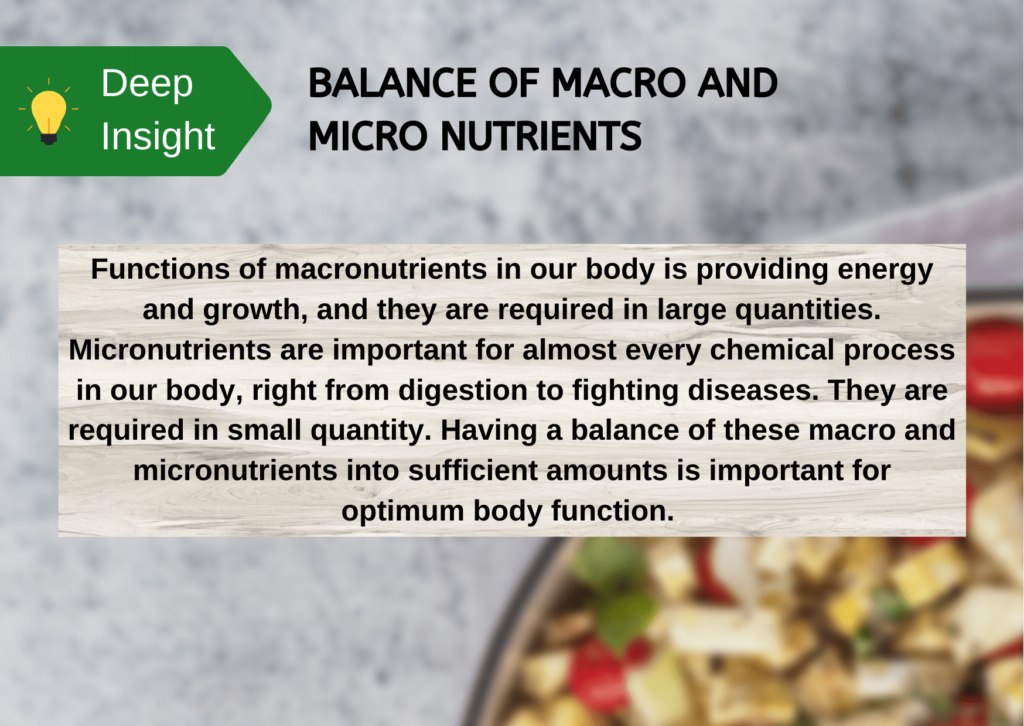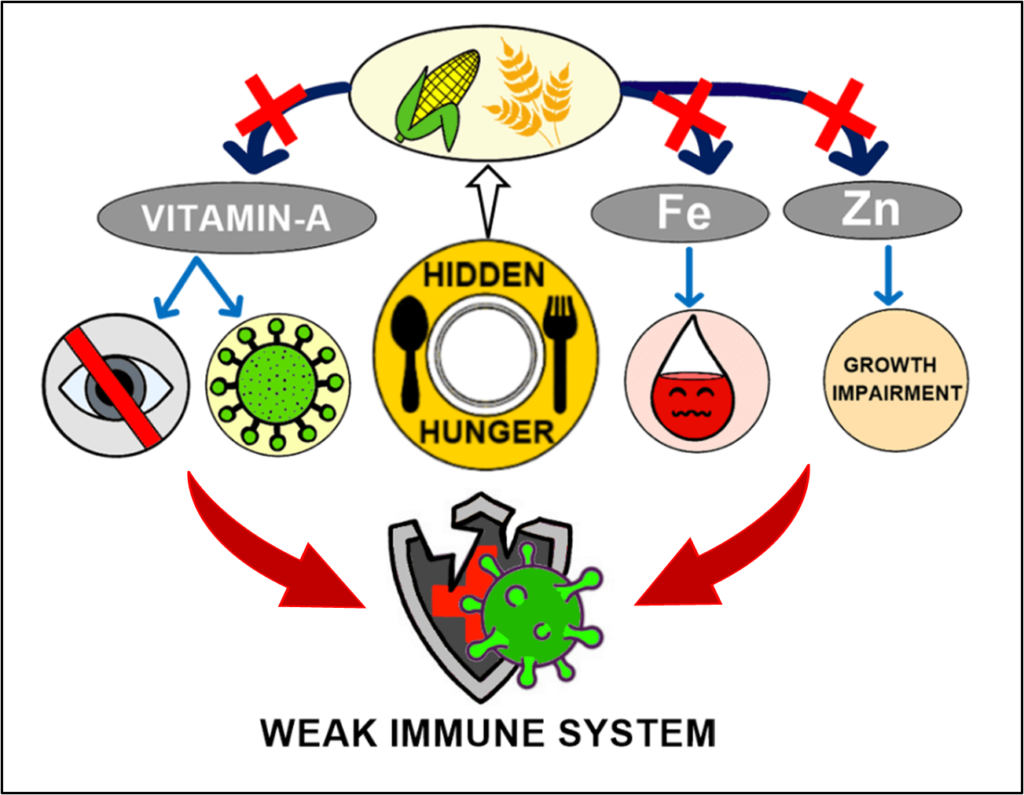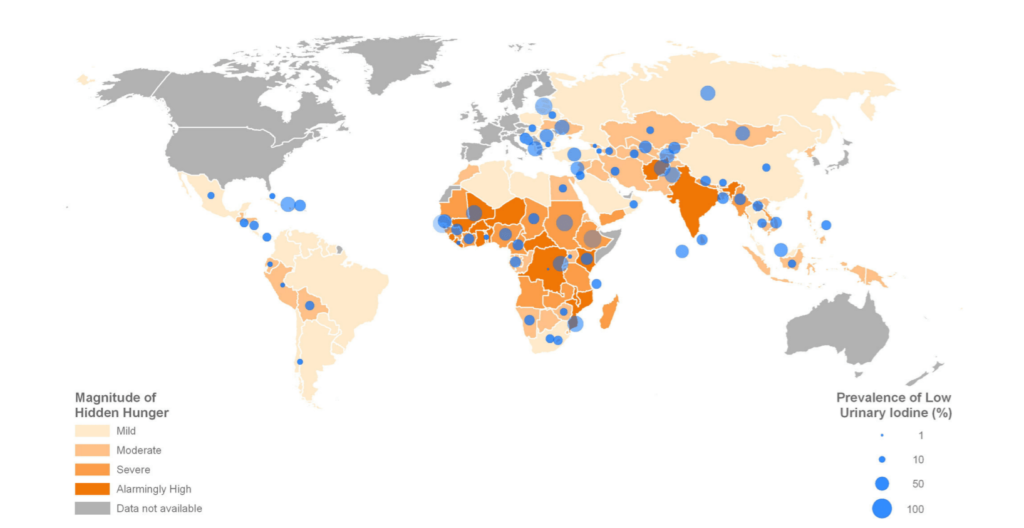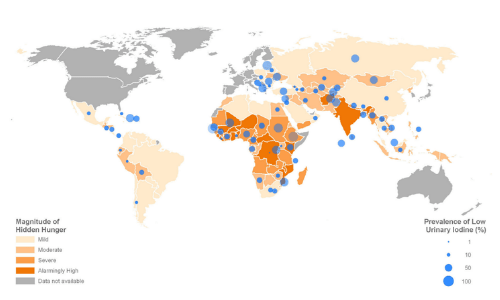Why solutions to hunger in the past are not perfect?
How many of you count the amount of calories you eat daily? I am sure most of you who workout regularly do that. Modern society is diet conscious. Avoiding fat food, drinking protein shakes after workout (even though you hardly did anything), “I’ll only have some salad” (in ridiculously fake American accent) is something you hear quite often these days. But do we really understand our diet?
Let’s dive into some history. In the middle of the 20th century, Green revolution averted a biggest famine in human history. Farmers were given only few types of crops to grow on a very large scale – Wheat, rice, corn. It led to monotonous diets. Thus, these food crops were part of our staple food. Rice, wheat and corn are rich in macronutrients such as carbohydrates, proteins and fats but lack micronutrients.

After green revolution, these food crops reduced hunger but did they really? Given micronutrients, though in small amount, are equally important for our health, deficiency of them is what we call as the hidden hunger. Wheat, rice and corn don’t fulfill the daily required intake of few micronutrients especially Vitamin A, iron and zinc. Vitamin A is necessary for the light-sensitive nerve cells in eyes. Deficiency in vitamin A causes night blindness. It is also necessary to keep skin and lining of vital internal organs healthy and avoid infections. Iron is important for oxygen circulation in your body. Low iron intake may in time reduce the haemoglobin level in your blood and affect the oxygen transport. You will feel tired often and after prolonged deficiency you may develop severe anemia, deficiency in red blood cells. In children, anemia can affect growth and brain development. Zinc deficiency in early symptoms can show loss of appetite, hair loss, etc. but in long term can result in growth impairment. All these deficiencies in micronutrients lead to weaker immune system. The deficiency symptoms are not be visible thus, hidden hunger is often overlooked and remains undiagnosed for many years. Also, if you don’t eat one day, you might feel energy less the next day, but with hidden hunger, the effects are often not immediate and are damaging the health system latently over a period of time.

Let’s zoom out a bit and talk in terms of countries and population size. When a huge proportion of a population is suffering from hidden hunger, the population has a weak immunity and health. If there is an outbreak of a disease, that population is vulnerable to a massive spread. It has also been observed that the overall life expectancy of the population is also low. It is estimated that around 2 billion people suffer from hidden hunger every year and majority of those are from South and South East Asia, South America and Africa. This is not a coincidence as these are the countries where green revolution made a huge impact. Though in 1960s, it might have saved lives, but now in the 21st century, we are seeing the negative effects of it. Green revolution barely kicked off in Africa which poses a different problem of actual hunger too!

success and Africa, where green revolution didn’t even kick off, suffer most from Hidden Hunger.
Hidden hunger also affects the economic wellbeing of a country. It’s a whole another topic to dive into which I will not do today, but by the map above, it is quite evident that countries with severe anemia prevalence have poor economies.
What is the step ahead? Hidden hunger, and health and wellbeing are part of the sustainable development goals by UN. Several countries are already working on how to combat it. Few ongoing solutions include fortification of food. It is adding essential vitamins and minerals to most common consumed foods during processing. It is proven safe and effective. Another is bio-fortification where you breed crops which make food with essential micronutrients. One such example is rice with high zinc content. It is more natural way than general fortification. Common direct method is consuming supplements.
Let’s zoom in back to our own health and fitness. It’s not necessary that below poverty line people who don’t have access to nutritious food suffer from hidden hunger. Due to a shift in fast food diet in recent years, hidden hunger is also observed in developed world. The fast food we most often eat contains lot of carbs, fats but lack most of the micronutrients. Hence, the hidden hunger is not even a problem for the poor. Importance of understanding what a balanced diet is very important. Eating is the basic part of our life and majority of people are doing it the wrong way.
1) Olson, R.; Gavin-Smith, B.;Ferraboschi, C.; Kraemer, K. FoodFortification: The Advantages, Disadvantages and Lessons from Sight and Life Programs. Nutrients2021,13, 1118. https://doi.org/10.3390/nu13041118
2) Eggersdorfer M, Kraemer K, Ruel M, Van Ameringen M, Biesalski HK, Bloem M, Chen J, Lateef A, Mannar V: The Road
3) Muthayya S, Rah JH, Sugimoto JD, Roos FF, Kraemer K, et al. (2013) The Global Hidden Hunger Indices and Maps: An
Writer

Rohit Pawar
Rohit is an ecologist who recently graduated with a bachelor’s degree in Biosciences from Savitribai Phule Pune University. He wishes to devote his life to ecosystem conservation. In his free time, he worries and overthinks about the biggest problems in the world, especially climate change. He thinks that we are 4 Elon Musks away from saving this planet. Rohit is currently pursuing his Master’s from Wageningen University.
Illustrator

Jayakrishnan Nair
He has completed his Masters in Medical Biotechnology from The Maharaja Sayajirao University of Baroda and is currently an active researcher in Molecular Epidemiology at The Centre for Cancer Epidemiology, Navi Mumbai. His journey in Science and Creativity began together during his childhood days. He believes that Art and Science indeed have a beautiful world altogether in them and sailing across its spectrum inspires him to sow his thoughts deep into Science and carve out the pillars of Art through them! Being a Science enthusiast and an Artist, he wishes to devote a good share of his life to wildlife and marine conservation as he feels that the creativity of nature needs to be taken care of in the current era.

